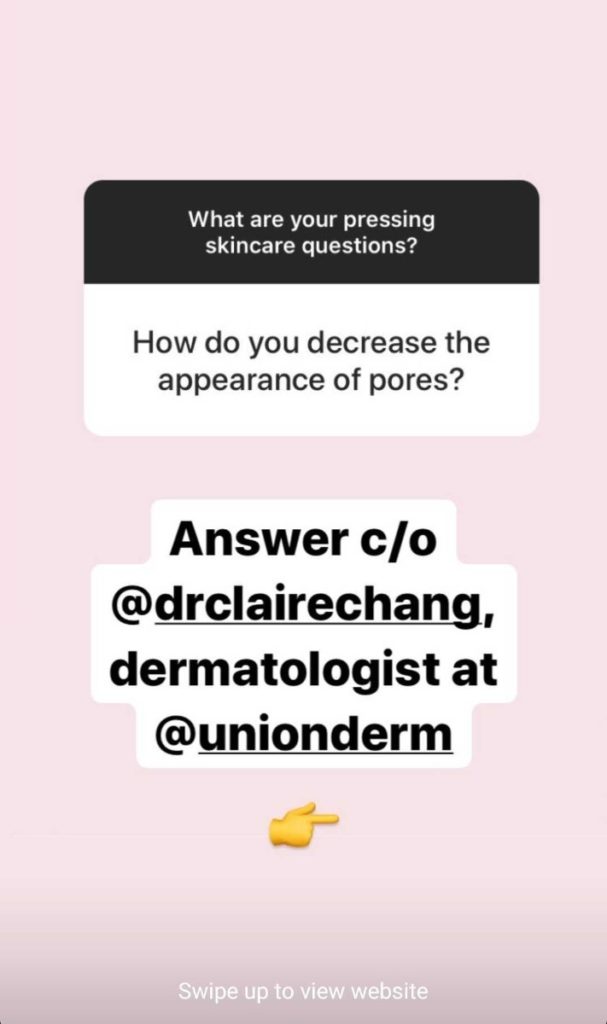This content originally appeared on August 5, 2021 as part of the Future of Marketing weekly email series. Subscribe here.
Welcome to Future of Marketing.
Each week, we send you the most relevant trends, resources, and strategies in social and user-generated content (UGC) from leading marketers and brands around the globe.
Today, we’re discussing:
- Watching the cookie crumble
- An interview with Claire Kennedy, Social Media Manager
- #BrandCrush: Glossier 💘
Watching the cookie crumble
Google delayed the deadline to block third-party cookies in Chrome until 2023 as they work closely with regulators and develop new technologies.. But just because the deadline was extended, that doesn’t mean you should stop thinking about it.
Third-party data is all of the data your business has on your customers – from your website, marketing channels, and customers – and is shared with another platform (like Facebook, Instagram, Google).
“Third-party data could tell you if a customer viewed an item like a new blender on one site so you could then cross-target them across various other websites and platforms with ads for other blenders as well,” shared Kevin Cochrane, Senior Vice President of Product Marketing at Acquia.
Here are 3 ways to adapt to forthcoming data privacy changes:
- Add available tracking data on marketing channels (and collect first-party data)
- Create transparency around how data will be used
- Build trust with leads and customers by sharing testimonials
Consumer privacy is becoming increasingly important, and brands who survive the post-cookie world will be those that gain consumer trust by providing complete transparency and control over what personal information they collect, how it is used, and with whom it is shared.
When done right, user-generated content (UGC) can drive more first-party data opportunities by showing fans, customers, and prospects that a brand isn’t going to mess with their data privacy.
An interview with Claire Kennedy, Social Media Manager
Post-cookie world or not, gaining people’s trust is key to retaining and securing new business.
We recently interviewed Claire Kennedy, Social Media Manager about her perspective on the future of marketing – and she made a good point:
“Post messaging that speaks to people versus the persona… People aren’t personas.”
Claire kennedy, social media manager
Instead, pay attention to engagement rates and make an effort to understand what people are going through – whether by asking your team or customers for a quote, sharing a poll on social media, or asking your audience to share a GIF or meme to describe their feelings.
User- and employee-generated content (UGC and EGC) are key for social listening. They give teams the ability to learn how people feel, what they’re talking about, and what they’re engaging with (which makes it easier to create content that actually resonates).
Next time you’re creating content, look back at your audience’s responses and make sure what you’re sharing aligns with their state of mind. As Claire mentioned during her interview, the line between B2C and B2B is blurring… It’s time for brands to think human to human (H2H).
What we’re learning
- Questions Answered About Micro-Influencers
- How Brands Can Survive The Death of Third-Party Data
- Nielsen Unveils Solution For Cookieless Media Measurement
- 40 Social Media Advertising Statistics that Matter to Marketers in 2021
- TikTok is Secretly Testing a Stories Feature with Select Users
#BrandCrush: Glossier 💘
Glossier, a modern beauty brand focused on making products their audience tells them wish existed, is not only sharing user-generated content on social media – but we caught Glossier doing something else we loved on Instagram (something other brands should do more of): Q&As.
Glossier asked their audience to share their most pressing skincare questions via Instagram Stories for a chance to have some of the best skincare experts answer. The best part is that Glossier e-mailed their audience’s questions to skincare experts, who responded via e-mail – and then, Glossier screen-captured and re-shared these responses on their stories.
Notice they didn’t have to waste time re-designing these responses… the screenshots were authentic and credible enough!
If you need to increase engagement and build trust, test out different methods to collect feedback from your audience (like a poll or a Q&A). Then, re-share this content so people know you’re listening.

